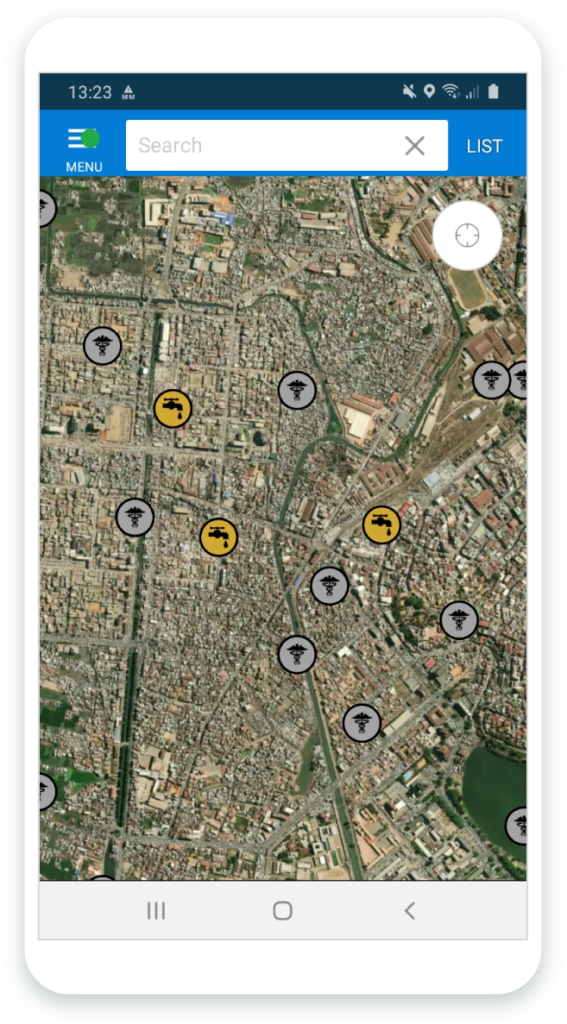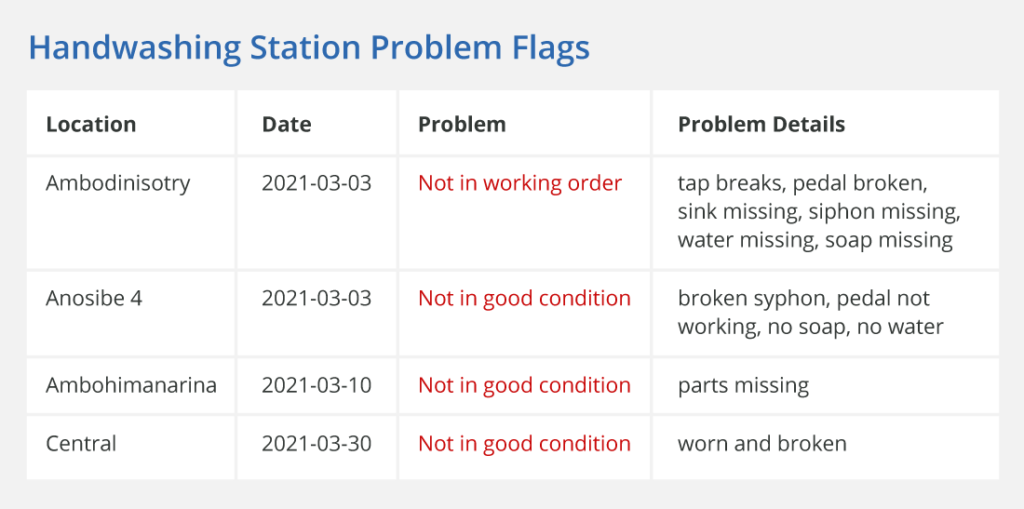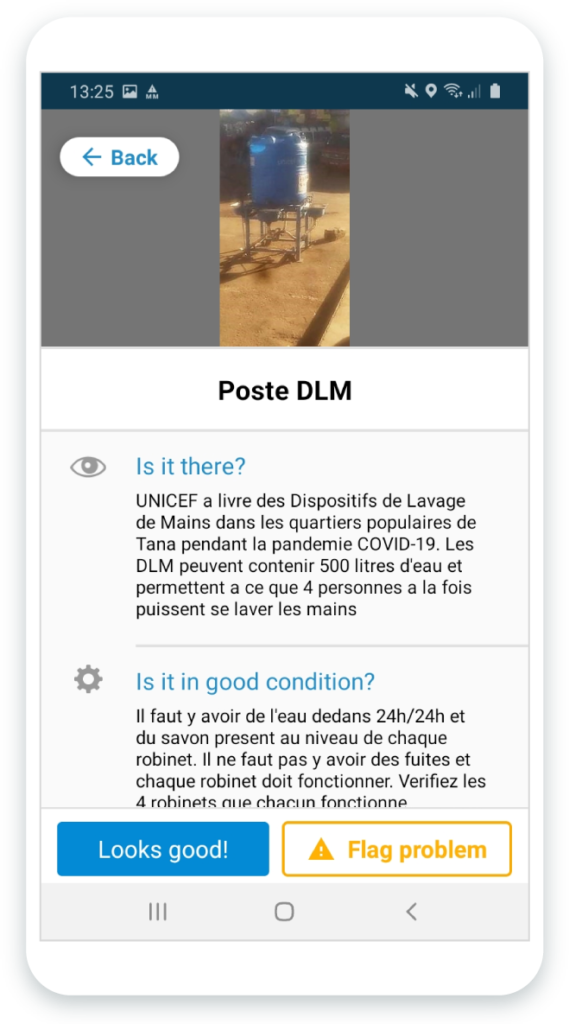Helping UNICEF Track and Monitor Supplies at the Last Mile
With a sophisticated procurement and logistics system, UNICEF delivers life-essential supplies to people in need in over 150 countries worldwide, distributing $2.37 billion of goods in 2018 alone. Teams work tirelessly to get these supplies to the intended beneficiaries, whether that’s providing midwifery kits to rural health facilities or, in light of the COVID pandemic, setting up handwashing stations in the busiest parts of the city. Following up on the supplies, once delivered, is a separate challenge though.
That’s why UNICEF approached Ona last year to develop a way to track and update statuses of UNICEF-provided goods within a country. Inventory tracking can involve thousands of service points where hundreds of items are delivered or built each year, so we knew we had to design with real-world team capacity in mind.
After talking the UNICEF’s East Africa regional and Madagascar teams, we realized the inspiration wasn’t traditional inventory tracking software, but something more flexible like social “check in” apps. Rather than expecting dedicated supply follow-up teams, we designed a solution to piggyback off other UNICEF trips. For example, if a team is traveling to dig a well, the team should be able to stop at schools, hospitals, and other service points along the way to do quick check-ins on inventory items.
The End User Supply Monitoring platform
The solution we created is called End User Supply Monitoring, or EUSM. It allows the UNICEF team to load inventory information into a web dashboard from their supply catalogue. Users can then use an app on their mobile phones to find facilities where UNICEF has sent goods, see lists of goods at each facility, and update the status of each item.
Searching and finding locations to visit
EUSM lets users navigate a map of nearby service points or search for a specific location. To support lengthy trips, these maps and inventory information of entire districts are available to download for offline use. In Madagascar, the inventory for 3,500 healthcare facilities, 10,000 schools, and nearly 1,000 water points are loaded onto the platform.

Updating the status of UNICEF-delivered goods at facilities
We designed the workflow for updating items to be simple so anyone on the UNICEF team, from a taxi driver to a WASH expert, can do it. After tracking down the supply that was delivered, users either report that it’s there and working in one tap — or flag a problem such as being missing or broken.
Viewing and responding to flagged issues
When items are flagged, alerts are sent to a web dashboard where supply monitors or program teams determine how to fix the issue. Last month, we had an opportunity to live test the system in Antananarivo, Madagascar, where UNICEF checked on the status of the handwashing stations set up to stem the new wave of COVID infections crippling the city. Using the app, UNICEF pinpointed the exact location and type of problems at several stations, and was able to follow up to address them.

Looking ahead
UNICEF Madagascar is keen to roll out the system nationwide, as soon as COVID travel restrictions are lifted, but in the meantime, they’ve found that EUSM can already be adapted to a different use case: helping stem the tide of COVID infections close to home.


